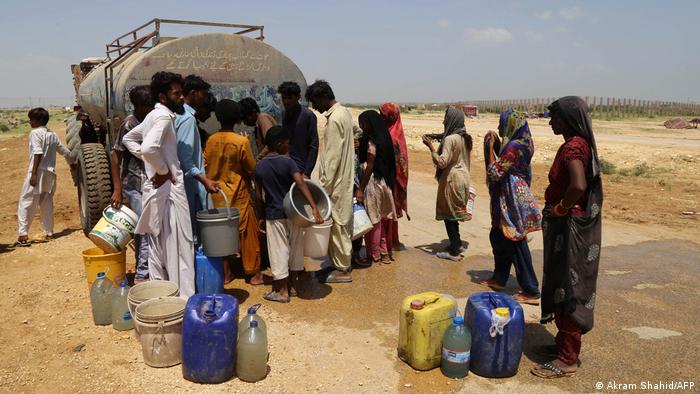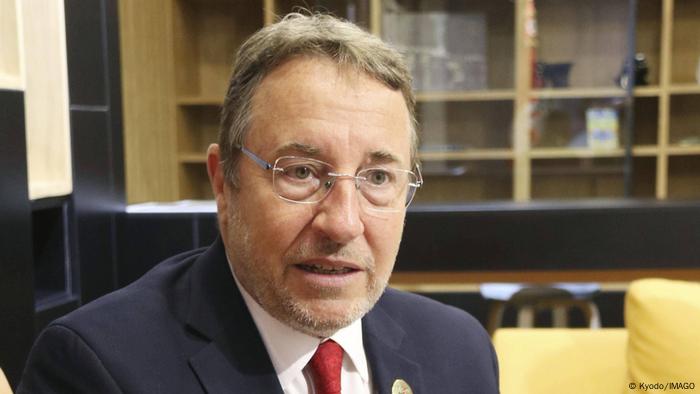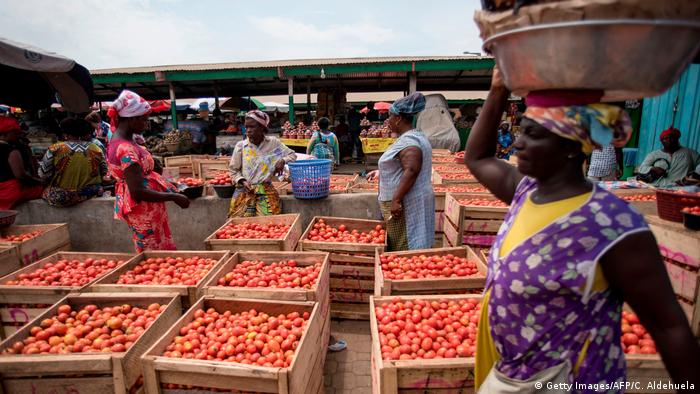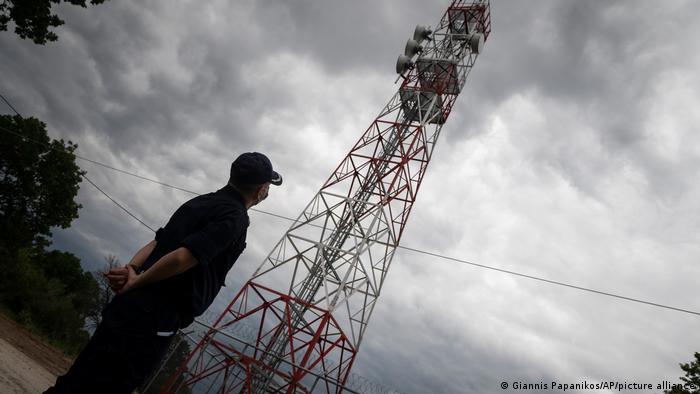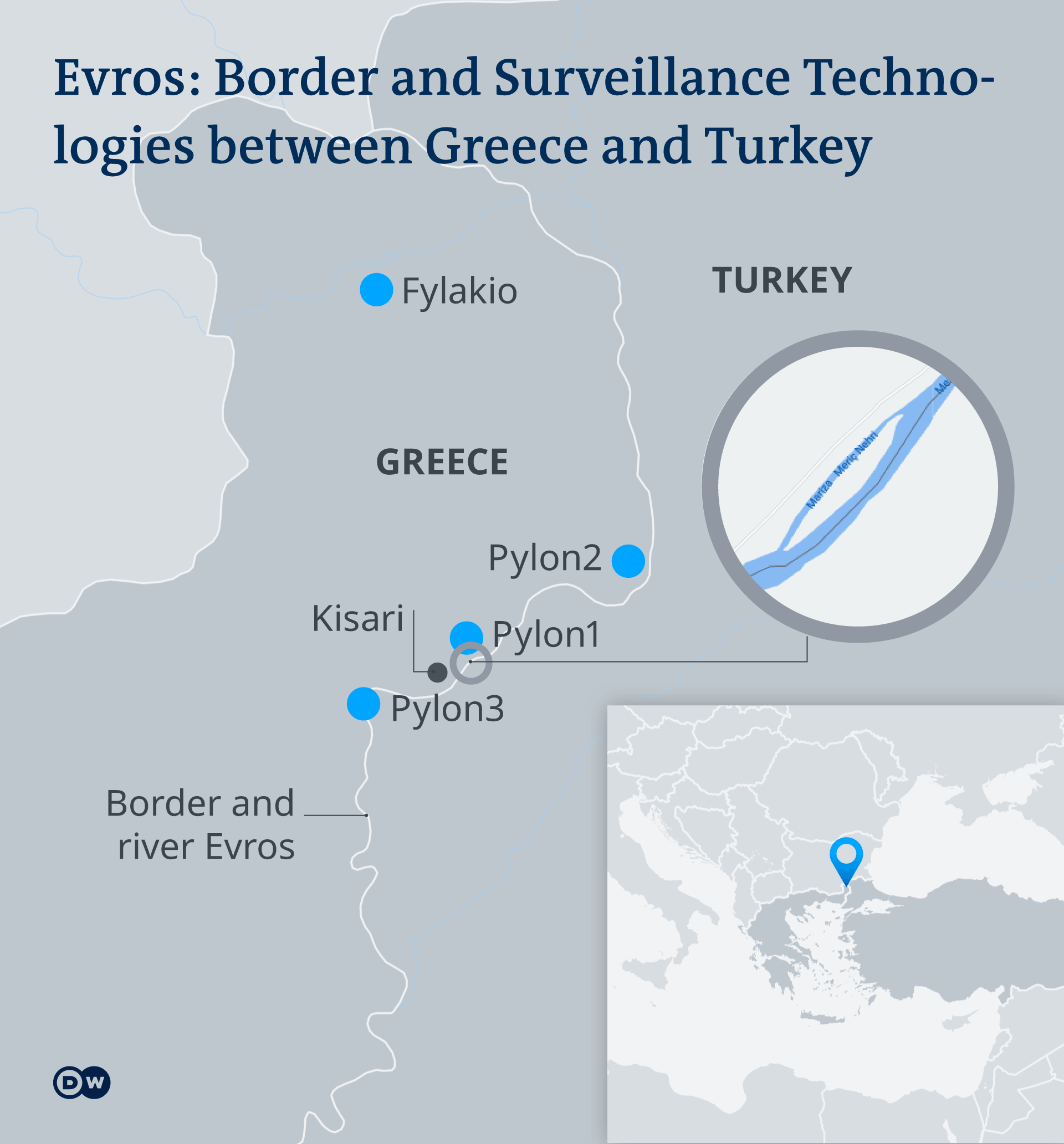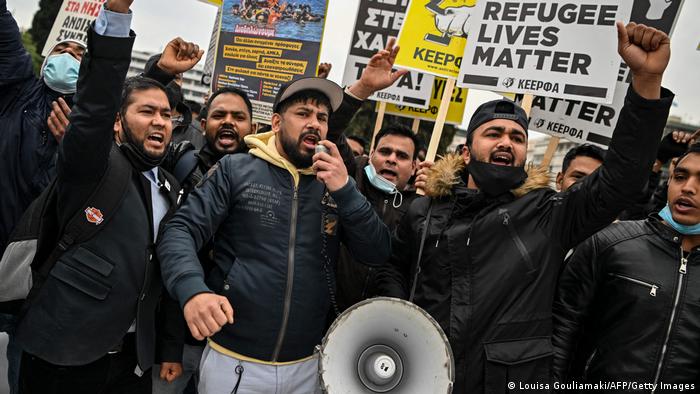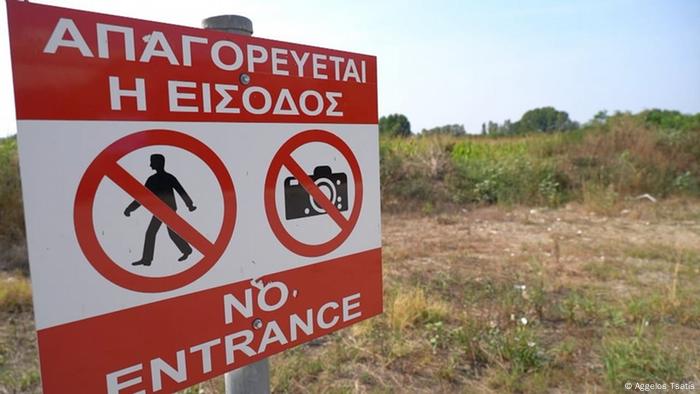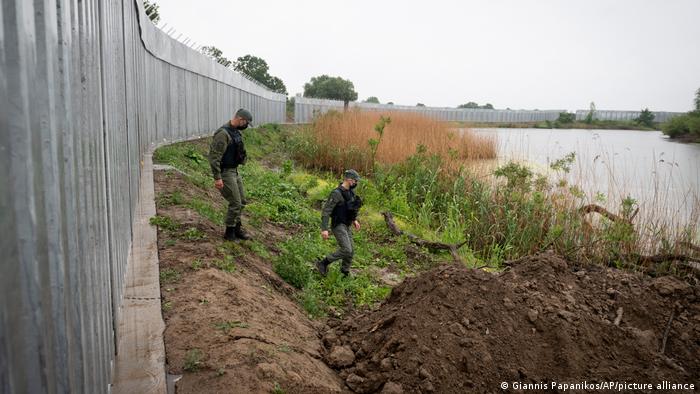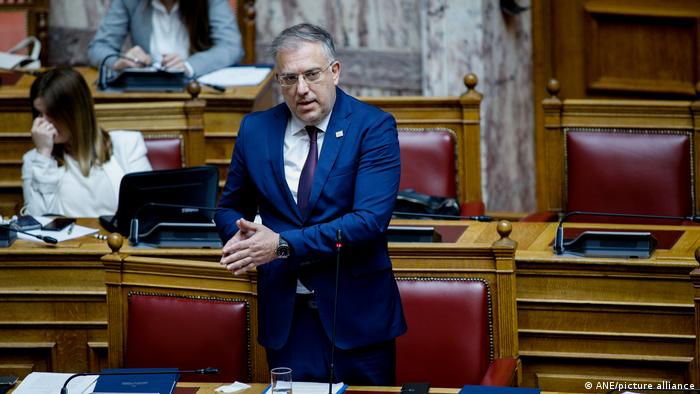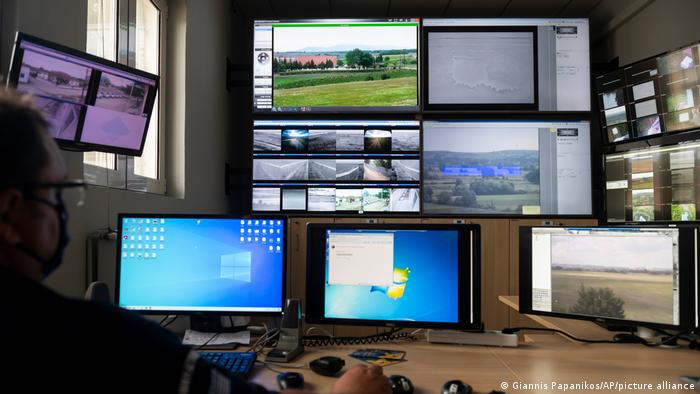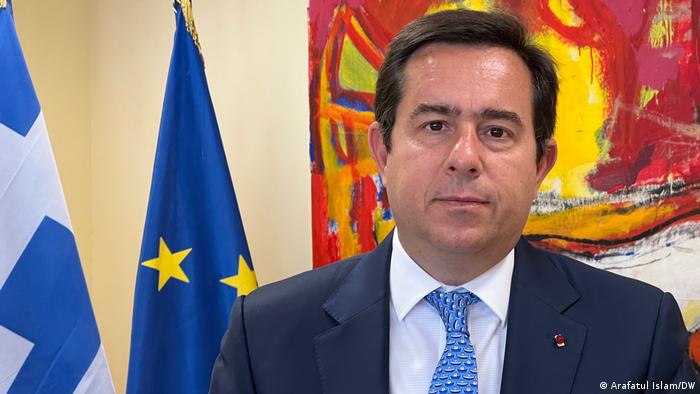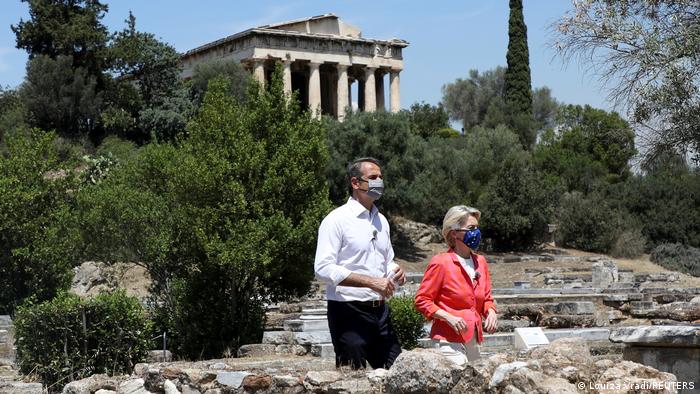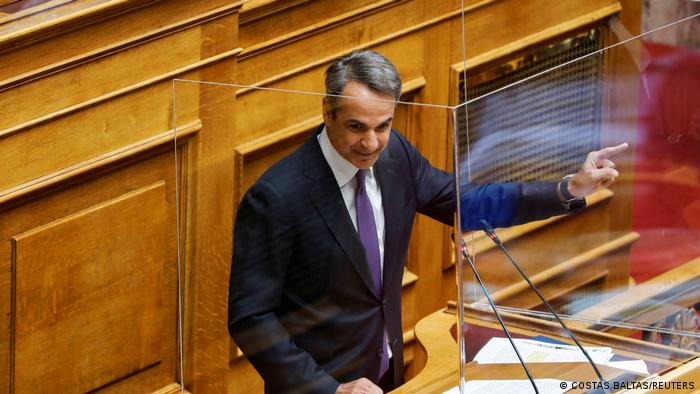Pakistan: Is international aid reaching flood victims?
UN Secretary-General Antonio Guterres is likely to appeal for more international aid for Pakistan's flood victims when he arrives in the South Asian country on Friday. But is the aid reaching those who really need it?
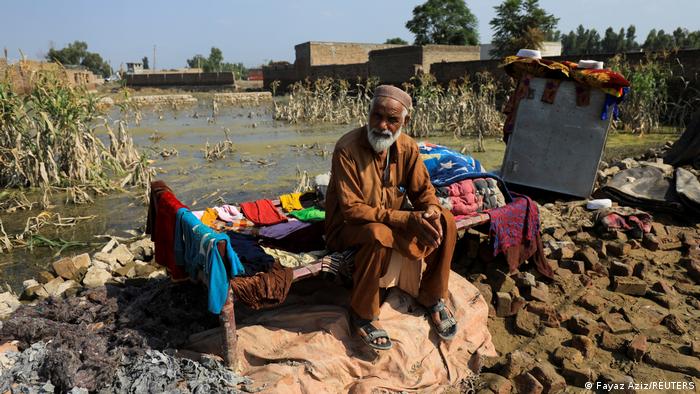
Authorities say they are doing their best to help the flood victims
UN Secretary-General Antonio Guterres has been at the forefront of an international effort to help the flood victims in Pakistan.
Guterres has actively supported the $160 million (just under €160 million) UN "Flash Appeal" to fund Pakistan's Flood Response Plan. When he visits the South Asian country on Friday, he is likely to appeal for more aid.
"The secretary-general will travel to areas most impacted by the floods. He will interact with displaced families and first responders in the field, and oversee UN's humanitarian response work in support of the government's rescue and relief efforts for millions of affected people," Pakistan's Foreign Ministry said in a statement.
It added that Guterres' visit "will contribute toward enhancing commensurate and coordinated international response to the humanitarian and other needs of the 33 million affected Pakistanis."
At least 1,300 people have been killed and millions displaced amid months of torrential rains in Pakistan. About one-third of the country has been flooded.
Although the UN and many foreign governments have pledged hundreds of millions in aid for Pakistan, Islamabad estimates it will cost at least $10 billion to rebuild everything that has been destroyed.
International aid pouring in
But the most pressing issue is to help people whose lives have been devastated by these floods.
The European Union has provided €350,000 in immediate assistance to people most affected by the climate catastrophe, especially in Jhal Magsi and Lasbella districts in the western Balochistan province.
The World Health Organization (WHO) has released $10 million from its emergency fund to support the Muslim-majority country. The World Bank announced $350 million, the World Food Program $110 million, Japan $7 million, the Asian Development Bank $20 million, the UK $46.6 million and the US $31.1 million.
Pakistani Prime minister Shehbaz Sharif last week tweeted that the first tranche of aid from the United Arab Emirates had already reached the country.
Other countries and international non-governmental organizations are also assisting Pakistan in these difficult times.
A source at the Ministry of Economic Affairs told DW on condition of anonymity that Pakistan has already received 40% of the UN "Flash Appeal" aid in the form of relief goods and assistance.
"The World Bank has repurposed some of its projects so that it could use them to support the ongoing relief efforts," he said.
People still waiting for aid
Although a substantial amount of aid has arrived in Pakistan, prominent social worker Faisal Edhi said that only 10% of the flood victims have received any assistance so far.
According to UNICEF, relief and rescue operations are still extremely difficult to carry out given the scale of destruction in many parts of the country.
Muhammad Nawaz Khoso, resident of the Nasirabad district in Balochistan, told DW that the government does not have the capacity to help them.
"My house in the village has been flooded for days now. Rising water levels forced me to leave the village with my family members," he said, adding that he and his family have been without any help for days.
Another flood victim from the southern Sindh province tells the same story. Saleem Magsi told DW that hundreds of people from different parts of the province have camped near the highway.
"Many remote areas in the province are still under water and authorities have not rescued the residents there. We have not received medicines, food and tents," he said.
Shazia Abid, a lawmaker from the Punjab province, says that women have been affected by floods more than others. "Many relief camps do not have toilet facilities, what to say about medicines, food and other facilities," she told DW, adding that thousands of people were camping on roads and had to walk three to four kilometers to safer areas.

Women have been severely affected by the floods, as toilets and other amenities are lacking
Government 'doing its best'
Rehmat Saleh, a former health minister in Balochistan province, who recently visited a number of floods affected areas, told DW that it is difficult to help flood victims without the help from nongovernmental organizations. "But the government has barred them from operating in the country on the pretext of security," he said.
Authorities say they are doing their best to help the flood victims. According to the federal government, it has introduced a scheme to deliver cash aid to families affected by floods.
Muhammad Younas, an official at the Provincial Disaster Management Authority, Balochistan, told DW that foreign aid was being distributed to people through the National Disaster Management Authority (NDMA).
"The NDMA delivers aid to provincial disaster management authorities, who then pass it to the district management and other administrative units."
"International NGOs have their own local partners who they give their aid to. They have their own mechanism and ways of assessing the damages and victims' needs. They, however, must get permission from the government to work in a particular area," Younas added.
Difficult days ahead
Although water is receding in some areas, the ordeal of the flood victims is far from over. There are reports of disease outbreaks in many flood-affected areas, and a shortage of medical facilities.
Al Khidmat relief organization estimates that at least five million people are at risk of contracting various diseases.
UNICEF fears that over three million children could contract waterborne diseases in the coming days. According to the UN body, at least 18,000 schools have been damaged or destroyed by the floods.
Muhammad Jalal Uddin from the ruling coalition in Islamabad says that Pakistan is hoping to receive more aid from the international community.
Renowned economist Kaiser Bengali, however, believes it would not be easy for the Pakistani government to get a large amount of aid. "One, there is a donor fatigue. Two, Pakistan needs to slash non-development expenditure, including the non-combatant defense budget, ration petrol and ban non-essential imports to generate more money that will be required for flood rehabilitation," he said.
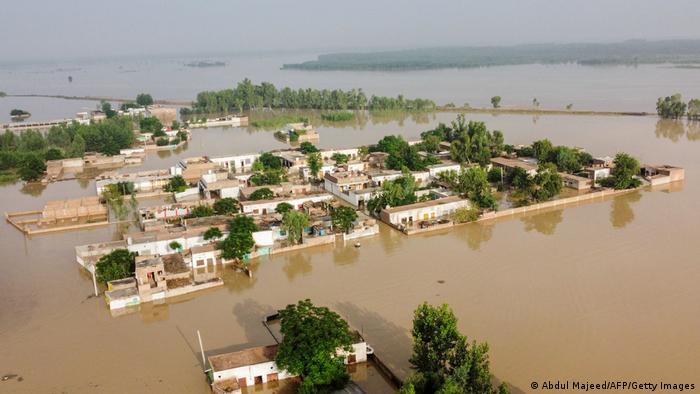
CATASTROPHIC FLOODING CONTINUES IN PAKISTAN
A country under water
Much of the country looks like this aerial shot of the northern Pakistani city of Charsadda. It’s "a climate dystopia on our doorstep," said Pakistan's Climate Change Minister Sherry Rehman. According to the Statistical Meteorological Office, there has been twice as much rainfall across the country than usual at this time of year. In some areas, even four times as much.
12345678
Edited by: Shamil Shams
A third of the country is under water — an area the size of the United Kingdom — following record rains brought by what Guterres has described as "a monsoon on steroids".
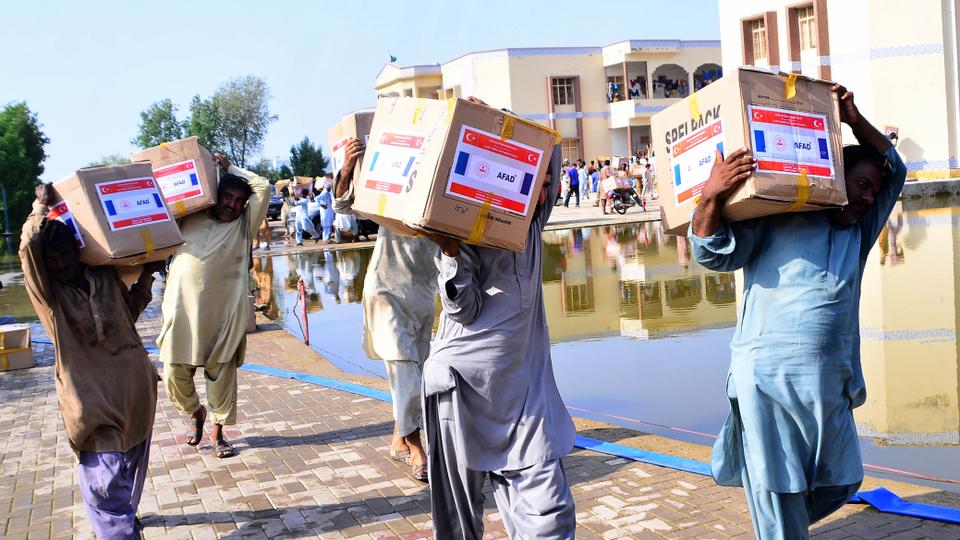
United Nations chief Antonio Guterres has begun a two-day visit to flood-hit Pakistan that officials hope will boost global support for a humanitarian crisis affecting millions.
Pakistan officials say it will cost at least $10 billion to rebuild and repair damaged infrastructure, but the priority, for now, is food and shelter for millions made homeless.
"Everything is drowned, everything washed away," said Ayaz Ali, suffering from fever as he reluctantly took his place Thursday on a navy boat rescuing villagers from flooded rural communities in southern Sindh province.
In a tweet en route to Pakistan, Guterres said he wanted to "be with the people in their time of need, galvanise international support."
Pakistan receives heavy — often destructive — rains during its annual monsoon season, which are crucial for agriculture and water supplies.
But a downpour as intense as this year's not been seen for decades, and Pakistan officials blame climate crisis, which is increasing the frequency and intensity of extreme weather around the world.
Pakistan is responsible for less than one percent of global greenhouse gas emissions, but is eighth on a list compiled by the NGO Germanwatch of countries deemed most vulnerable to extreme weather caused by climate change.
READ MORE: Türkiye sends two planes carrying aid for Pakistan flood victims
Tents and tarpaulins needed
A flood relief plan scaled by the Pakistan government and UN last month called for an immediate $160 million in international funding, and aid is already arriving.
On Thursday a US Air Force C-17 landed — the first American military plane in Pakistan for years — bringing desperately needed tents and tarpaulins for temporary shelter.
While Washington is a key supplier of military hardware to Islamabad, relations have been fractious as a result of conflicting interests in neighbouring Afghanistan — especially since the Taliban returned to power there in August last year.
READ MORE: PM Sharif likens Pakistan to a 'sea' as flood death toll mounts
The meteorological office says Pakistan received five times more rain than normal in 2022 — Padidan, a small town in Sindh, has been drenched by more than 1.8 metres (70 inches) since the monsoon began in June.
The effect of the heavy rains has been twofold — flash floods in rivers in the mountainous north that washed away roads, bridges and buildings in minutes, and a slow accumulation of water in the southern plains that has submerged hundreds of thousands of square kilometres (miles) of land.
In Jaffarabad district of Balochistan Thursday, villagers were fleeing their homes on makeshift rafts made from upturned wooden "charpoy" beds.
Thousands of temporary campsites have mushroomed on slivers of dry land in the south and west — often roads and railway tracks are the only high ground in a landscape of water.
With people and livestock cramped together, the camps are ripe for outbreaks of disease, with many cases of mosquito-borne dengue reported, as well as scabies.
The floods have killed nearly 1,400 people, according to the latest National Disaster Management Authority report.
Nearly 7,000 km of roads have been damaged, some 246 bridges washed away and more than 1.7 million homes and businesses destroyed.
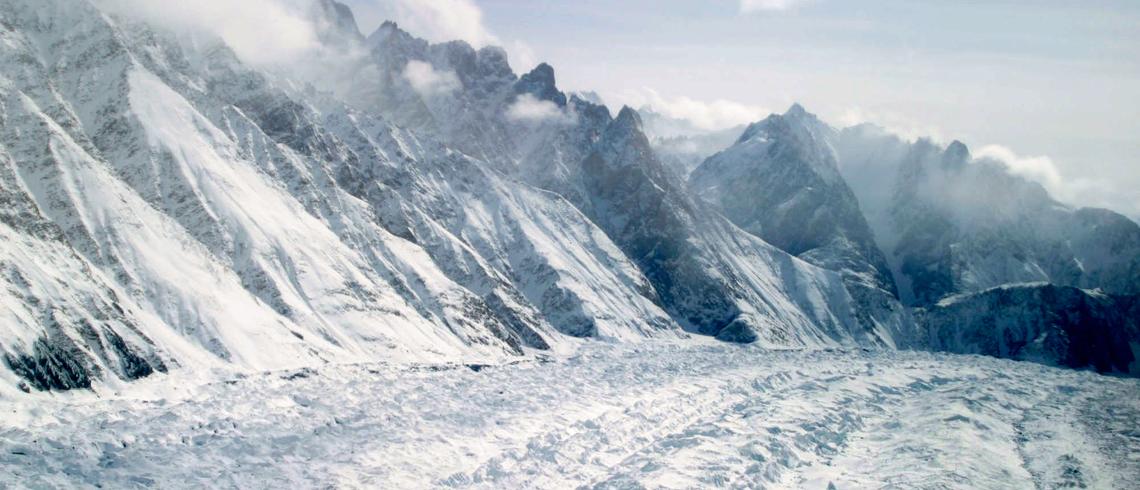
Blaming melting glaciers for Pakistan floods is far-fetched: experts
SAAD HASAN
A factual diagnosis of the disaster is important in order to develop a concrete contingency plan.
In the past few days, the internet was rife with speculation that fast-melting glaciers have caused the recent deluge in Pakistan.
One-third of the South Asian country of more than 220 million people is under water as massive flooding submerged hundreds of villages and towns, displacing millions and killing more than 1,200 people.
Contrary to the theory of melting glaciers, the devastation has been brought by prolonged monsoon downpours, which occur annually in the subcontinent region that includes India, experts say.
However, the volume of rainfall this year was something people had not seen in a lifetime, raising concerns about the worsening impact of climate crisis.
“These floods were mostly the result of southbound rains,” says Dr Shafqat Munir, a research fellow at Islamabad-based think tank, Sustainable Development Policy Institute.
“To be very clear, the glaciers had nothing to do with the recent floods,” he tells TRT World.
Pinpointing the exact cause for the unprecedented floods is of utmost importance as Islamabad and the international community focus on preparing a contingency plan to battle such a natural disaster in the future.
Screaming headlines such as ‘Pakistan’s melting glaciers are erupting and worsening floods’ can undermine efforts and investments needed to battle the ravages of climate change.
Pakistan contributes less than 1 percent to global greenhouse gas emissions. Yet, environment experts count it among the most vulnerable to the fallout of rising sea levels and rapidly shifting weather patterns.
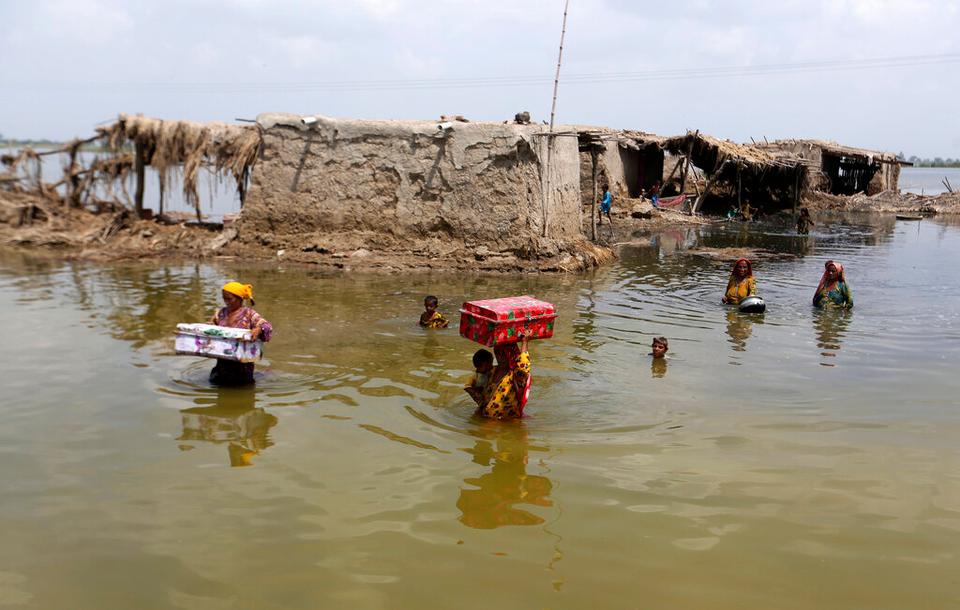
Glacial lake threat still real
Much to the disbelief of residents in Swat and Gilgit-Baltistan, the tourist hotspots in Pakistan’s north, water tributaries overflowed, dragging human-sized boulders down the hills, washing away markets and homes.
“What happened in Swat and Gilgit was a cloudburst. If the floods were caused by melting glaciers then the downstream dams would have filled with water. That didn’t happen,” says Munir.
Mangla Dam built on the Jhelum River, which collects water from the melting snows of the Karakoram and Himalayan mountain ranges, still hasn’t been completely filled, he says.
But videos shared on social media in which bridges could be seen swept away by muddy deluges triggered a debate about thousands of glaciers in the country's mountainous north. The fear of more downstream towns and cities getting flooded by melting glaciers became palpable.
With more than 7,000 glaciers, Pakistan is known as the third pole – having the most number of moving snow mountains outside of the Antarctic and Arctic polar caps.
Rising temperatures cause glaciers to melt and the runoff creates glacial lakes that can burst anytime and cause flash floods in towns spread across foothills.
The phenomenon known as the Glacial Lake Outburst Flood (GLOF) hit the Hunza district in May this year when a heatwave swept across the country.
“Such flash floods unleash widespread destruction for communities in the downstream valleys,” says Dr Parvaiz Naim, an Islamabad-based ecologist.
“Nonetheless, such floods have so far been of local significance only because of the relatively small volumes of water (discharge),” he tells TRT World.
The May flash floods were the result of a breach at the Shisper glacial lake, which is less than half a square kilometer in size. It released probably around 50 million cubic meter of water.
But that was enough to wash away a major bridge on the Karakoram Highway, submerge a hydropower plant and destroy houses, says Naim.
Glaciers melt and move all the time, causing the lakes to form and, at occasions, burst violently. In Pakistan, the monitoring of the effects of climate change on glaciers is a relatively new phenomenon, says Naim.
Water authorities keep track of glacial melt using telemetric stations but that’s done to regulate the water flow of hydropower dams.
Yet the “available evidence suggests that the formation of glacial lakes has probably increased in recent years. This increases the flooding risk for downstream communities,” he says.
This year has been particularly testing for Pakistanis when it comes to dealing with weather changes. The ‘monster monsoon’ of July-August was followed by an intense heat wave in May.
In southern Sindh province, people are still stranded in villages and fields inundated by the floods. Rescue workers are struggling to reach them.
“The major concern is the timing of the annual summer glacial melt. If the glacial melt peak coincides with the monsoon rainfall peak, then we need much more than a few more boats!” says Naim.
Source: TRT World
Pakistan: Monsoon rains endanger UNESCO World Heritage Site Mohenjo Daro
In Pakistan, heavy monsoon rains are threatening the archeological ruins of a 4,500-year-old city. Parts of the ancient Mohenjo Daro site have reportedly already been damaged.
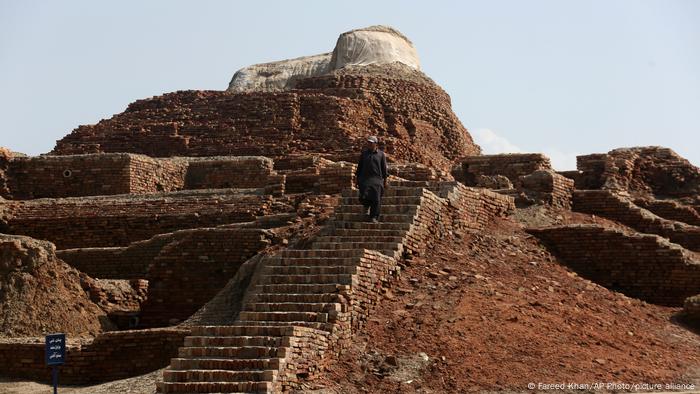
The ancient city Mohenjo Daro is on the UNESCO World Heritage List as
the largest preserved Bronze Age city.
Parts of the ancient Mohenjo Daro ruin in Pakistan are already damaged, with heavy monsoon rains affecting the archeological ruins of the 4,500-year-old city, according to local reports.
The ruins of Mohenjo Daro are located in the southern province of Sindh on the right bank of the Indus River, about 510 kilometers (317 miles) northeast of Pakistan's largest city, Karachi, and 28 kilometers from Larkarna. The site is considered one of the best preserved urban centers in South Asia.
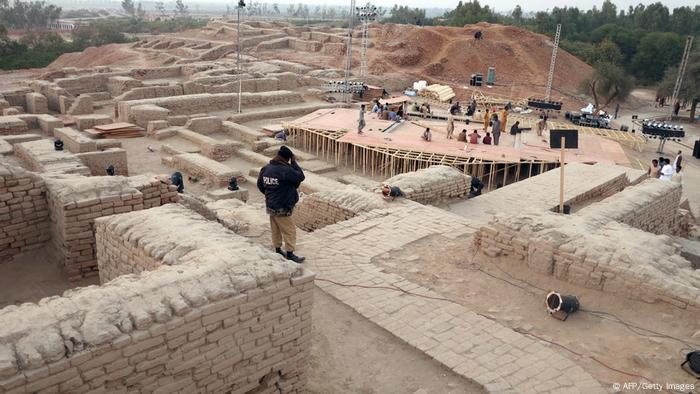
Repair work has begun in Mohenjo Daro
The Indus River floods did not directly hit Mohenjo Daro, Ahsan Abbasi, the site's curator, told The Associated Press news agency. Nonetheless, the unprecedented rainfall severely damaged the ruins of the ancient city, he said. Several big walls collapsed, he said, adding that extensive repair work has begun. However, the site's landmark Buddhist stupa (a structure resembling a burial mound, ed.) is intact, Abbasi said.
Mohenjo Daro was part of the Bronze Age Indus culture from 2,600 to 1,800 B.C., one of the three early advanced civilizations of humankind in the 3rd millennium B.C. Its disappearance coincided with that of Egypt and Mesopotamia. The settlement was abandoned, was forgotten and only rediscovered in 1922 by British-Indian archaeologists. The name Mohenjo Daro means "mound of the dead" in the Sindhi language.
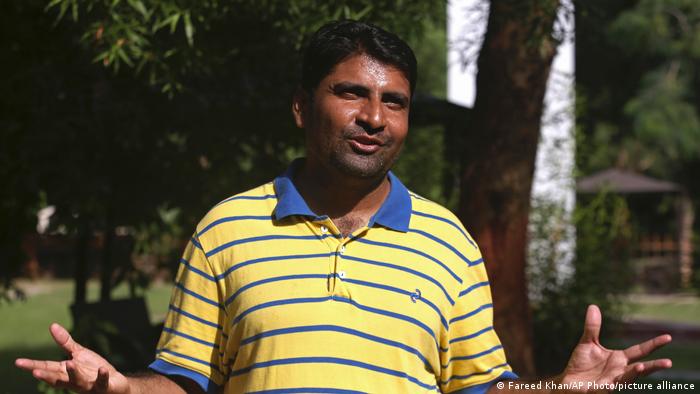
Ahsan Abbasi says several big walls have collapsed as a result of the rains
The discovery of the site allowed accurate conclusions about the locals' customs, art, religion and administrative organization. Their well-planned city with its public baths, a college of priests, an elaborate sewage system with wells and cesspools and a large granary, was built largely of baked bricks. According to UNESCO, Mohenjo Daro was a "metropolis of great importance." It is on the UNESCO World Heritage List as the largest preserved Bronze Age city.
Severe monsoon rains
The ruins are visible from afar. At 15 meters, the citadel (a later addition) located west of the lower city is the highest structure. 4,500 years ago, the site must have been even more impressive — over time, the Indus River has raised the plain by more than seven meters.
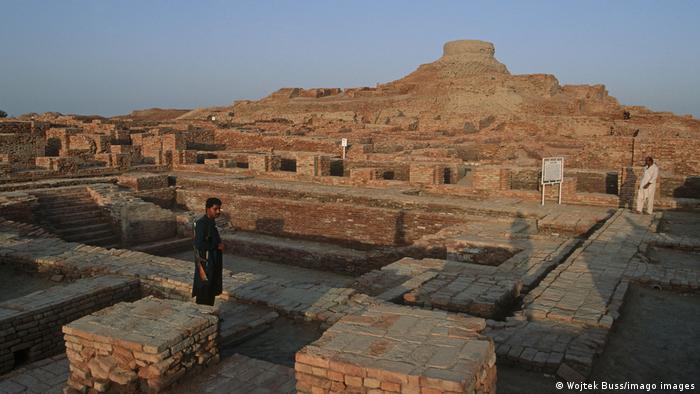
Mohenjo Daro is listed as the largest preserved Bronze Age city
The rising waters of the Indus, one of the region's most important rivers, have wreaked havoc across large parts of Pakistan. More than 1,300 people have been killed and millions have lost their homes in the floods.
UN Secretary-General Antonio Guterres is scheduled to visit Pakistan on Sept. 9 to express solidarity with the people and ask for massive international support for the country. The floods are a result of climate change, which is "supercharging the destruction of our planet," he said.
"Today it is Pakistan. Tomorrow it can be anywhere else,'' he warned.
According to Pakistani officials, Guterres will travel to Sindh, but it was unclear whether he will visit the archaeological site.
sd/suc (ap/dpa/UNESCO)
This piece was originally written in German.
